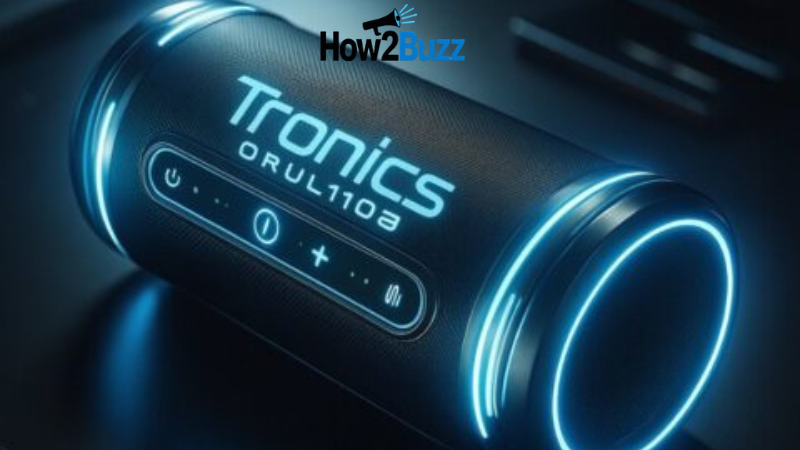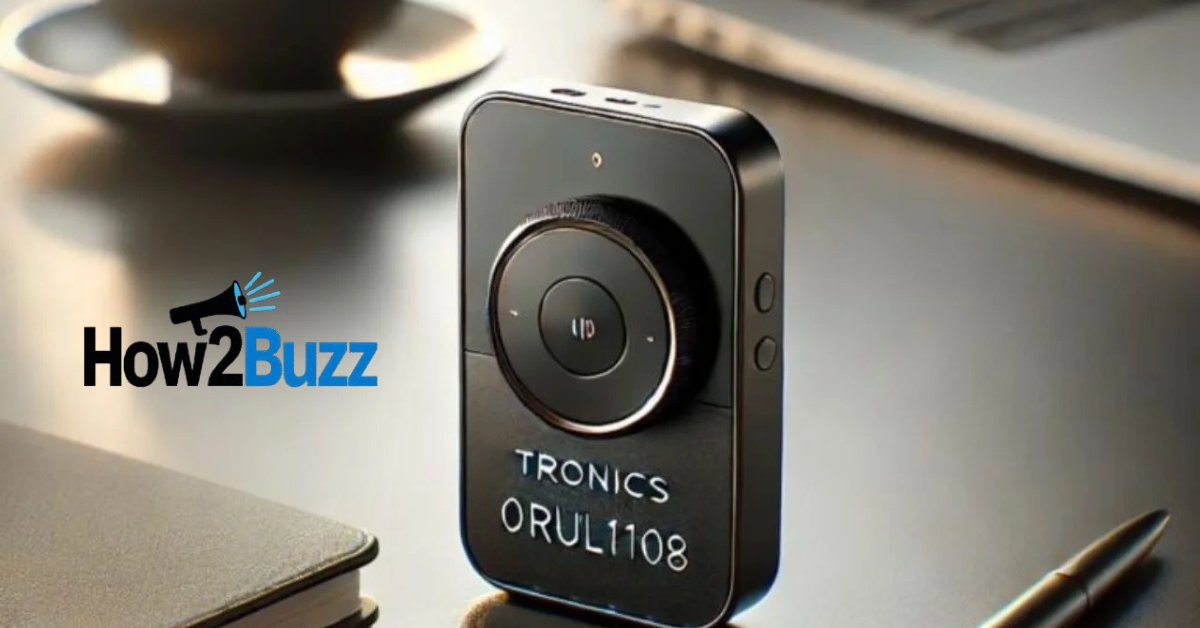In today’s DIY tech landscape, obscure electronic parts are often more valuable than mainstream components — and tronics orul1108 is one of those mystery parts quietly powering more devices than you’d expect. Whether you’re a tinkerer, a repair technician, or just a curious mind, chances are this term has popped up in a repair manual or circuit diagram and left you puzzled.
Although it’s not a household name, tronics orul1108 is slowly gaining traction in niche electronics communities. It’s likely tied to a specific class of parts used in power distribution or signal relay functions — the kind of thing found deep within circuit board parts or custom-built systems. In this article, we’ll explore what this component might be, how it fits into broader electronics trends, and why identifying such parts can be a game changer.
Decoding Tronics ORUL1108: What Could It Be?
At first glance, tronics orul1108 looks like a part number or batch ID. That’s common in the electronics industry, where thousands of small, functional components are labeled with codes that make sense only to engineers or manufacturers. But when this code shows up repeatedly across forums, listings, and even repair tutorials, it starts to mean more.
Some users believe it refers to a type of power distribution module, often used in machines or embedded systems. Others suspect it’s related to relay module function, especially due to its presence in switch-based designs or industrial automation boards. Whatever its true identity, it appears often enough in technical circles to warrant attention.
If you’re repairing old electronics, especially those from second-hand sources or obscure manufacturers, you might run into tronics orul1108. Knowing where it fits in a schematic can be the difference between reviving a circuit and hitting a dead end.
The Role of Electronic Component Identification in Repairs
One of the biggest challenges in tech recycling or repairs is proper electronic component identification. Without clear labels or datasheets, hobbyists and technicians are often left to reverse-engineer parts — a frustrating but common scenario. This is where community knowledge and hands-on experience step in.
For those working with used electronic components, especially devices with unknown origins, identifiers like tronics orul1108 are clues. They help determine compatibility, function, and how the part connects within a broader circuit board. It’s like piecing together a jigsaw puzzle without a reference picture — but that’s also part of the thrill for many electronics enthusiasts.
When dealing with custom DIY electronics, you don’t always get the luxury of standardized parts. That’s why learning to identify and repurpose components like tronics orul1108 is a crucial skill in this space.
Reusability and the Rise of Rare Electronic Parts
There’s a growing trend in component reusability. Instead of tossing out old devices, more people are choosing to repair, repurpose, or even upcycle parts. This sustainable approach not only reduces waste but also teaches valuable skills.
Tronics orul1108 seems to fall into the category of rare electronic parts — components that aren’t sold in mainstream stores but are available through surplus vendors or online auctions. These parts often work just as well as newer equivalents, and sometimes better, especially in vintage hardware or older embedded systems.
What makes these parts special isn’t just their function, but their story. Salvaging and reusing a piece like tronics orul1108 from a discarded board and bringing it back to life in a new project is a modern-day kind of craftsmanship.
Mastering the Art of Soldering and Board Design
Anyone working with soldering small parts knows that components like tronics orul1108 can test your patience. These parts often have narrow leads, tight pin spacing, or awkward shapes. A single misalignment can cause a short, making precision and technique critical.
But this is where the fun lies. Soldering isn’t just a task — it’s a skill that blends patience, dexterity, and an understanding of current flow. For hobbyists or professionals modifying boards, tools like flux pens, fine-tip soldering irons, and magnifiers are essential when installing components like this one.
As you develop more custom projects — whether they involve automation, retro builds, or hardware modding — you’ll likely cross paths with parts that aren’t plug-and-play. Learning to solder and design for them is part of becoming a full-fledged builder.
Where to Source Tronics ORUL1108 and Similar Components
Finding hard-to-find components like tronics orul1108 takes a bit of research. Unlike mainstream chips, you won’t find these in every electronics store. Online platforms like eBay, AliExpress, and DigiKey sometimes list them, especially under “miscellaneous” or surplus inventory.
Always verify voltage ranges, dimensions, and pin configurations before buying. Forums and tech recycling groups can also be goldmines — users often share lists of compatible substitutes or even post teardown photos that help you match parts by function rather than name.
If you’re deep into breadboard compatible parts or prototyping, it helps to keep a few of these mystery parts on hand. Even if you’re not sure how you’ll use tronics orul1108 right away, it might turn out to be perfect for your next small power project or switching circuit.
Embedded Systems and DIY Builds on the Rise

Modern makers are turning toward embedded system hardware and microcontrollers for building everything from smart mirrors to automatic plant watering systems. In such setups, the demand for specific relay controls, low-voltage regulators, and reliable switching parts is high.
Tronics orul1108 could easily play a role in this space. Whether it’s part of a power system, switch network, or internal timing mechanism, components like these give builders more flexibility and control. When designing a custom PCB, the ability to integrate non-standard but effective parts is a huge asset.
Even pre-built development boards often benefit from additional components — especially when scaling projects or integrating external devices. That’s where knowing your parts and understanding how they behave under load becomes crucial.
From Hobbyist Electronics to Full-Scale Innovation
The journey from hobbyist to innovator often starts with trial and error. Most people begin with simple circuits — an LED blinker, a temperature sensor, or a speaker test. But over time, those experiments evolve into larger, more complex systems.
Hobbyist electronics has never been more accessible. Online tutorials, open-source platforms, and budget-friendly tools make it easier to get started. Components like tronics orul1108 might not have a datasheet, but they offer a unique opportunity to learn by doing.
Every time you identify, test, and successfully install one of these parts, you sharpen your skills. That’s how garage tinkerers become engineers — not by reading alone, but by building, failing, and building again.
The Role of Tech Recycling in a Sustainable Future
E-waste is one of the fastest-growing types of pollution in the world. Each year, millions of devices are discarded, often due to minor faults or lack of repair knowledge. Tech recycling and the reuse of parts like tronics orul1108 are small but significant ways to fight this trend.
By salvaging components, you’re not just saving money — you’re also extending the life of materials that would otherwise go to waste. This approach supports e-waste reduction and helps reduce demand for unnecessary new manufacturing. Whether you’re building a solar-powered light or repairing a broken radio, reusing reliable parts is an act of environmental responsibility. It shows that innovation doesn’t always mean new — sometimes, it means making the old work again.
FAQs: Understanding and Using Tronics ORUL1108
Is Tronics ORUL1108 compatible with Arduino boards?
While there’s no official compatibility list, some users have successfully used it in Arduino-controlled switching circuits. Proper testing is recommended.
What tools are needed to install Tronics ORUL1108?
Basic tools like a soldering iron, multimeter, and breadboard setup are helpful. Precision tweezers and a magnifier can also make handling easier.
Can I replace it with a modern component?
Possibly. You’d need to match its voltage, current capacity, and function. Many parts have equivalents, but testing is crucial.
Is it safe to use salvaged parts like this in home projects?
Yes, as long as you inspect them for damage and test them under safe conditions. Avoid using them in high-voltage or critical systems unless you’re confident.
Where can I learn more about identifying rare components?
Online forums like EEVblog, Reddit’s r/Electronics, and YouTube teardown videos are excellent learning resources.


